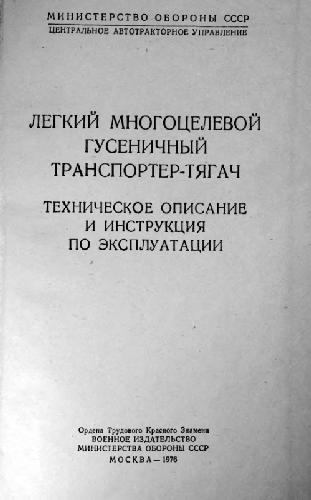- 2 402 202 книги
libcats.org






Handbook for Estimating Physiochemical Properties of Organic Compounds
Martin Reinhard, Axel DrefahlThe purpose of this Handbook is to introduce the reader to the concept of property estimation, and to summarize property estimation methods use for important psychochemical properties. The number of estimation methods available in the literature is large and rapidly expanding. This book covers a subset judged by the authors to have relatively broad applicability and high practical value. A key word is judged, this book is not a literature review of all methods. In this regard, it is somewhat disheartening to see no mention of Sam Karikoff's early practical correlation of Koc to solubility and melting point. Knowing Martin, this omission is not an act of professional slight, but a consequence of efficiency in selecting recent, updated works because the later ones impacts directly on the goals of their Handbook. Nevertheless, readers, users and future generations will be unaware of Sam's contribution to the area of property prediction of environmentally relevant chemicals. He really popularized the subject publishing a key manuscript in 1979 and set the stage for high interest in the entire subject of predicting partition coefficients from thermodynamic properties. In addition, they will be unaware of his predecessor Ed Kanaga, who first proposed the idea to environmental chemists and engineers the previous year.. I reviewed an early manuscript of the book several years ago and liked it. This version is improved and some things of practical interest were included. My interest is primarily in Chapters 11 through 14, these subjects are: aqueous solubility, air-water partition coefficients (AWPC), 1-octanol water partition coefficients, and soil-water partition coefficients respectively. As an example of use of the Handbook I was particularly interested in AWPC estimation. These are found on pages 141-143 where four algorithms are reviewed and two are given. This is followed by the use of the method of Suzuki et al.; calculation details are given for determining Henry's constant for quinoline. The correlation is based on both molecular connectivity indices (MCI) and groups contributions. Additional statistical information is given about estimator algorithms useful to the practitioner. For the Suzuki et al. method: n=229, s=0.20 and r=0.994. This is a small book (228 pages), both handy and un-intimidating in size. It is filled with easy to use algorithms. Some, however, are easier than others. The group contribution approaches are more convenient to use than the MCI ones, in my opinion. It contains data in five appendixes. These include: density/temperature, vircosity temperatures, AWPC/temperatures, logs contributions, and Kow atom contributions. The full glossary in Appendix G is invaluable for using the algorithms effectively. The other chapter titles are: Overview of Property Estimation Methods; Computable Molecular Descriptiors; Density and Molar Volume; Refractive Index and Molar Refraction; Surface tension and Parachor Dynamic and Kinematic Viscosity; Vapor Pressure; Enthalpy of Vaporization; Boiling Point and Melting Point. Basically, thermodynamic things with viscosity being the only transport property covered. I wonder why they did not include molecular diffusivity as well. Knowing the physicochemical properties of organic chemicals is a prerequisite for many tasks met by chemical engineers and scientists. Chemical property estimation is the process of deriving an unknown property for a query compound from available properties, molecular descriptions, or reference compounds. The first chapter reviews the classes of estimation methods. Four general classes are covered, they include: quantitative property-property relationships (QPPRs); quantitative structure-property relationships (QSPRs); group contribution models (GCMs); and simlarity-based models. This overview chapter of theoretical approaches summaraizes the property estimation methods considered in the book. The remaining thirteen chapters are comprehensive compendium of published property estimation techniques for organic compounds for use by scientists and engineers seeking to estimate properties. The estimation methods have been carefully selected by the authors. Being highly respected researches in the subject area, they are well qualified to make this judgement.
Louis J. Thibodeaux, Jesse Coates Professor and Kallait T. Valsaraj, Associate Professor Gordon A. and Mary Cain Department of Chemical Engineering Louisiana State University Baton Rouge, LA 70803
Ссылка удалена правообладателем
----
The book removed at the request of the copyright holder.
----
The book removed at the request of the copyright holder.
Популярные книги за неделю:
#2

В.Бекетов, К.Харченко. Измерения и испытания при конструировании и регулировке радиолюбительских антенн (djvu)
4.82 Mb
#4

Самодельные детали для сельского радиоприемника
Авторы: З.Б.Гинзбург, Ф.И.Тарасов.Категория: радиоэлектроника
1.40 Mb
Только что пользователи скачали эти книги:
#2

В.Бекетов, К.Харченко. Измерения и испытания при конструировании и регулировке радиолюбительских антенн (djvu)
4.82 Mb
#4

Самодельные детали для сельского радиоприемника
Авторы: З.Б.Гинзбург, Ф.И.Тарасов.Категория: радиоэлектроника
1.40 Mb
#14

МТ-Л, МТ-ЛБ, МТ-ЛБВ, МТ-ЛВ. Легкий многоцелевой гусеничный транспортер-тягач. Техническое описание и Инструкция по эксплуатации
Категория: Военная техника
13.38 Mb
#20

Определитель бактерий Берджи в 2 томах. Том 2
Хоулт Дж., Криг Н., Смит П., Стейли Дж., Уилльямс С.Категория: биология и медицинская наука
19.55 Mb












